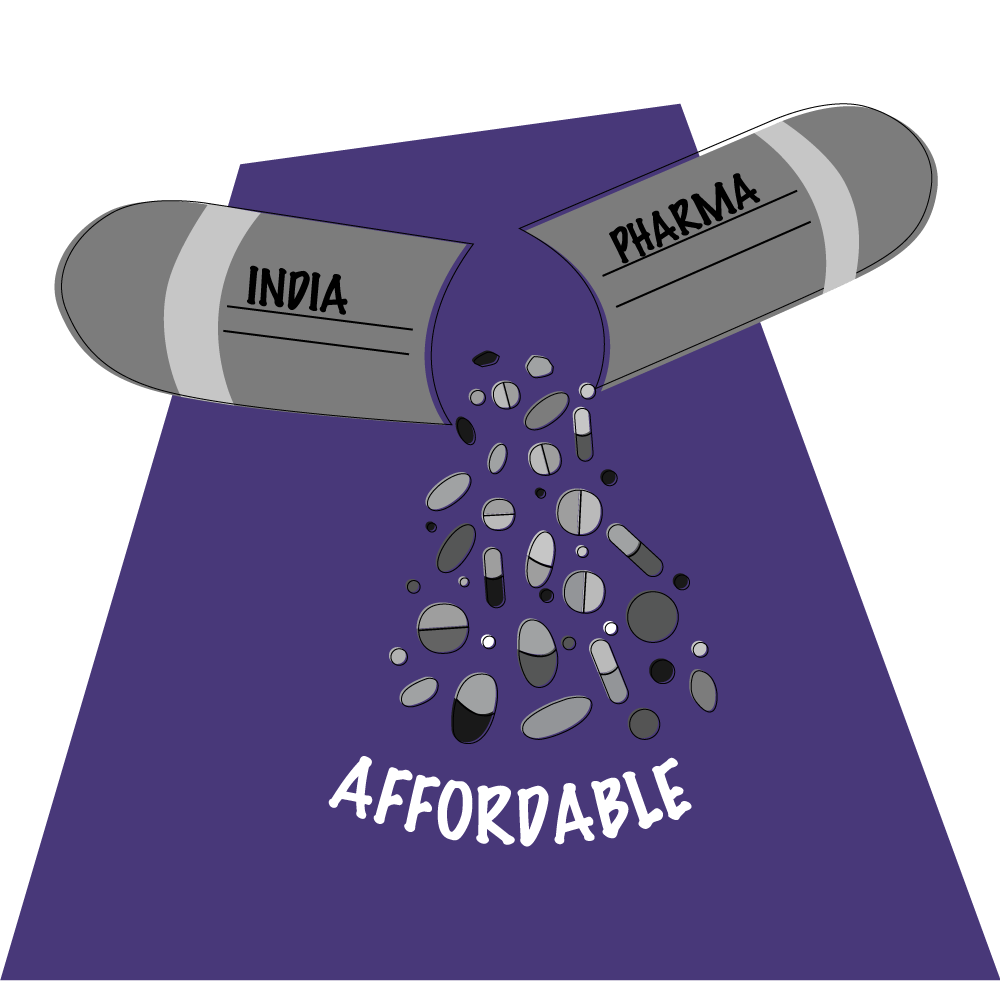Implications of Price Capping In Indian Pharmaceutical Industry and IPR

Introduction:
In developing countries, cost of healthcare facilities and pharmaceutical drugs, is a major concern. The development of the pharmaceutical industry is crucial for reducing morbidity and mortality rate. Patent is an incentive for those investing in R&D and manufacturing in the pharmaceutical industry. However, with such benefit to the patentee in the industry, comes a drawback of exorbitant prices fixed to the essential as well as life-saving drugs, which makes the drugs less affordable and inaccessible, which defeats the very purpose of development in the pharmaceutical industry. Therefore, this industry is subject to price-capping, by which, the Indian policy-makers aim to strike a balance between the interests of the pharmaceutical industry and social welfare of the people.
Price Regulation in Pharmaceutical Industry:
In India, there arose a situation where drug prices had to be regulated as some Pharmaceutical Companies increased the prices of their products to get maximum ROI, which affected the affordability of the consumers. The Drug Price Control Order is an order by the Government under the Essential Commodities Act, which facilitates the fixing of prices of some essential drugs and their formulations. Introduced in the 1970s, the DPCO placed limits on the profitability of the pharmaceutical companies. The main aim of the DPCO is to make available the essential and life-saving drugs of good quality at reasonable prices.
Patentability and Affordability in the Indian Pharmaceutical Industry:
Innovation and R&D plays a key role in the development of pharmaceutical industry. Such innovation provides a huge scope for product patents. In 2005, product patents were reintroduced and laws were made TRIPS compliant. The protection granted to product patents has encouraged the manufacturers to invest in Research and development (R&D) for affordable drugs of good quality, to satisfy the growing market demands. However, this led to exorbitant prices being charged by MNCs which was overpriced even for the rich. In compliance with TRIPS Agreement, which does not debar any country from implementing price-controls, India has adopted certain measures to ensure that the healthcare devices and drugs are more affordable to its population, by making provisions for:
A. Discouraging Ever-greening of Patents:
Ever-greening of patents refers to the process by which the patentee can extend the life of their patents and maximize their profits. Such patent ever-greening is highly prevalent in the pharmaceutical industry, where additional patents are filed relating to the original patent, thereby protecting their inventions from their competitors for a longer period of time. In India, patents are given for a period of 20 years. However, in pharmaceutical industry in particular, the manufacturers try to retain their monopoly on the invention even after the expiry of patent, by ever-greening their patents, so that no other company can make or sell their invention. The Indian Judiciary discourages the ever-greening of patents and the Apex Court made strong observations regarding this issue in the landmark judgment of Novartis v. Union of India. In Novartis case, a new version of the cancer medication Gleevec, developed by the Swiss pharmaceutical company Novartis, was the subject of a patent application because of its enhanced leukemia-fighting capabilities. However, Section 3(d) of the Patents Act of 1970, prohibits ever-greening by preventing the grant of patents for minor modifications of existing patents. The Supreme Court’s ruling in this case is hailed by many, as it deals with the issue of affordability of life saving medicines due to the exorbitant price charged by the pharmaceutical companies. Ever-greening enables existing patent holders to make modest alterations to their patented medicines and claim them as brand-new creations, thereby extending their market monopoly. After the patent expires, this approach is frequently perceived as a means of avoiding spending money on costly research and development (R&D) for really innovative medications. R&D for existing drugs costs significantly less, around 10% of the expense required for developing a completely new drug. This strategy does, however, come with hazards, as demonstrated by recent failures in clinical trials of new pharmaceuticals, including with COVID-19 vaccines.
The Supreme Court’s ruling against the ever-greening of patents is a step towards preventing the abuse of patent monopolies and encouraging innovation in the pharmaceutical industry. This landmark judgment upholds the intent of the Patent Act, 1970, which aims to ensure that patents are granted only for truly novel and non-obvious inventions, and not for minor alterations to existing patented products. This decision has far-reaching implications, as it helps protect access to affordable medicines for those in need, encourages genuine innovation, and safeguards the public interest in the field of healthcare.
B. Grant of Compulsory Licensing to non-patentee under certain conditions:
Compulsory licenses refer to the authorization given to a non-patentee by the government, to make, use and sell the patented product without seeking the permission of the original patent-holder. The Indian Patent Act, 1970 contains provisions relating to compulsory licensing in Chapter XVI, and Sections 84-92, which deals with the conditions which need to be fulfilled for the grant of compulsory licensing.
Compulsory licensing guarantees that drug prices are reasonable and creates a balance between the interests of generic producers, public welfare, and the patent holder’s ultimate objective.
The famous case of Bayer Corporation v. Natco Pharma ,illustrates the first ever compulsory license, granted for the Nexaver drug, which is used to treat advanced liver and Kidney cancer. The compulsory license was granted to Natco Pharma for generic production of Bayer Corporation’s Nexaver, which was sold by Bayer Corporation at an exorbitant rate of Rs. 2.8 lakhs. By the grant of compulsory license, this life saving drug was made affordable at the price of Rs. 9000.
Conclusion:
The initiative taken by the Indian Judiciary and legislature in regulating the prices of the pharmaceutical drugs and restricting the scope of patentability of the drugs by discouraging ever-greening and granting compulsory licensing is laudable as it has positively impacted the affordability of many life-saving medicines and made it within the reach of the people.

